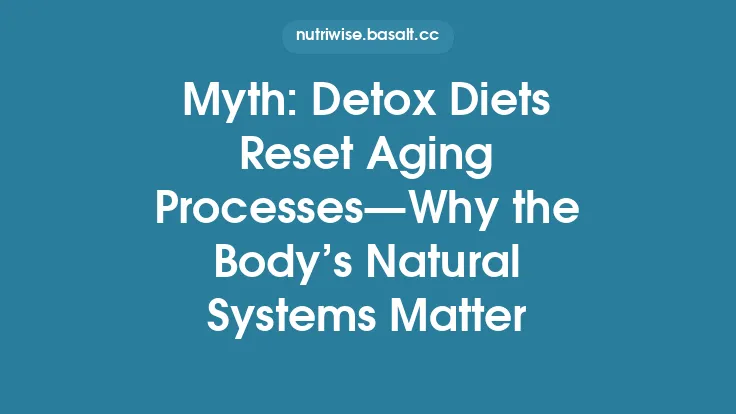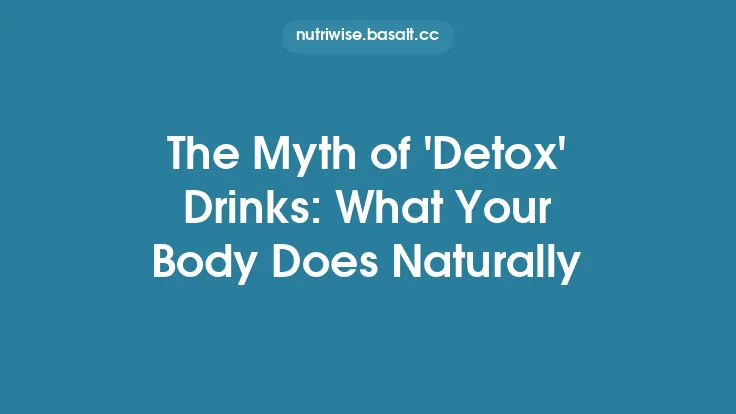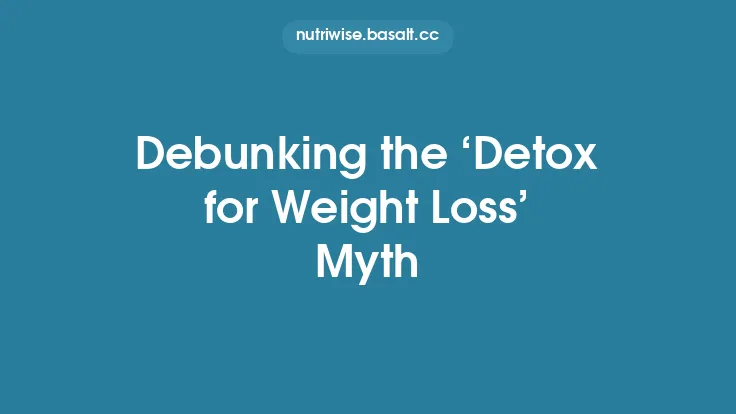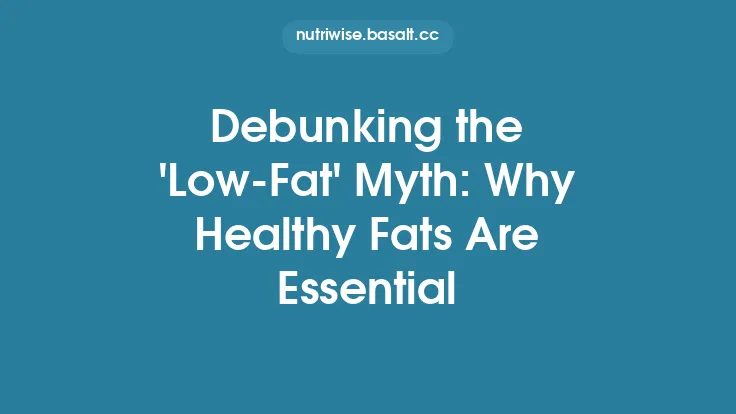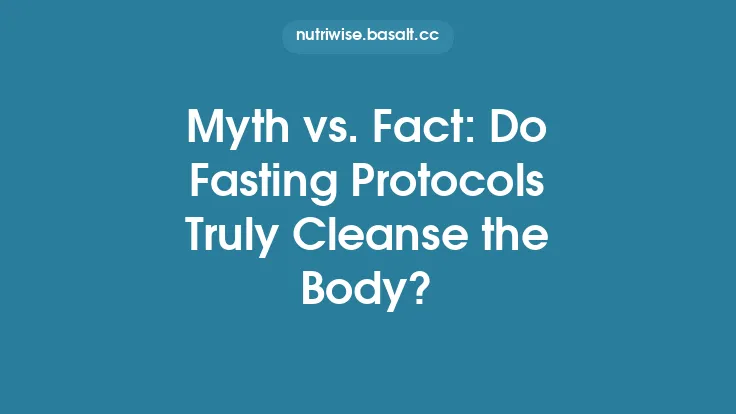Your body is equipped with a sophisticated network of systems that continuously identify, transform, and eliminate unwanted substances. This “detox” machinery operates 24 hours a day, 7 days a week, and it does so without the need for a special juice‑only regimen. Yet the idea that a short‑term flood of fruit and vegetable liquids can “reset” or “cleanse” the body persists in popular culture. Below we unpack the biology behind the body’s natural cleansing pathways, examine what actually occurs during a juice cleanse, and explain why the evidence does not support the claim that such cleanses are necessary—or even beneficial—for most people.
What “Detox” Really Means in Physiology
In scientific terms, detoxification is the process by which the body converts potentially harmful compounds into forms that can be safely stored, metabolized, or excreted. This involves three broad steps:
- Recognition – Cellular sensors (e.g., nuclear receptors, transport proteins) detect xenobiotics, metabolic by‑products, or endogenous waste.
- Transformation – Enzymatic pathways, most notably the Phase I (oxidation, reduction, hydrolysis) and Phase II (conjugation) reactions, modify these molecules to increase their solubility.
- Elimination – The altered compounds are moved out of cells and ultimately expelled via urine, bile, sweat, or exhaled gases.
These steps are distributed across multiple organs and tissues, each contributing a specific set of enzymes and transporters. While the liver and kidneys are the primary sites for chemical modification and filtration, the skin, lungs, and gastrointestinal tract also play essential roles in the final removal of waste.
Why Juice Cleanses Gained Popularity
The modern juice cleanse is a cultural offshoot of several converging trends:
- Visual Appeal – Brightly colored, freshly pressed drinks look “clean” and “pure,” reinforcing the perception that they are free of toxins.
- Convenient Caloric Restriction – A juice-only diet dramatically reduces solid food intake, which many interpret as a quick way to “reset” metabolism.
- Marketing Narratives – Brands often claim that the high concentration of vitamins, antioxidants, and phytonutrients in juice can “flush out” pollutants, even though the scientific basis for such claims is weak.
- Social Validation – Influencers and anecdotal testimonials create a feedback loop that equates short‑term weight loss with detox success.
These factors combine to make juice cleanses an attractive, albeit oversimplified, solution for people seeking a fast‑track to health.
The Body’s Built‑In Cleansing Mechanisms
1. Cellular Turnover
Every day, billions of cells undergo programmed death (apoptosis) and are replaced by new cells. During apoptosis, cellular components are broken down into harmless fragments that are recycled or expelled. This constant renewal prevents the accumulation of damaged proteins and DNA.
2. Blood‑Brain Barrier & Cerebrospinal Fluid Turnover
The central nervous system is protected by a selective barrier that limits the entry of toxins. Cerebrospinal fluid is produced and reabsorbed several times daily, carrying away metabolic waste from the brain.
3. Pulmonary Exhalation
Volatile compounds, such as ethanol, acetone, and certain environmental pollutants, are eliminated through the lungs. Even trace amounts of carbon monoxide are bound to hemoglobin and cleared during respiration.
4. Dermal Sweating
Sweat glands excrete water, electrolytes, and small amounts of metabolic by‑products (e.g., urea, lactate). While sweat is not a primary route for toxin removal, it contributes to overall homeostasis, especially during physical activity.
5. Gastrointestinal Motility and Bile Secretion
The gut moves waste toward the rectum via peristalsis, while bile transports lipid‑soluble metabolites to the intestine for fecal excretion. The enterohepatic circulation also recycles certain compounds, allowing the body to fine‑tune elimination.
Collectively, these processes operate continuously, independent of any short‑term dietary manipulation.
What Happens When You Do a Juice Cleanse?
Macronutrient Shift
Juice is predominantly carbohydrate (simple sugars) with minimal protein and virtually no fat. A typical 3‑day cleanse can provide 1,200–1,500 kcal, most of which comes from fructose and glucose. The lack of protein reduces the supply of essential amino acids needed for muscle maintenance and enzyme synthesis.
Glycemic Impact
Rapid absorption of sugars can cause spikes in blood glucose, prompting a surge of insulin. In individuals with normal insulin sensitivity, this is usually well‑tolerated, but repeated spikes may exacerbate insulin resistance over time.
Electrolyte Balance
While juice contains potassium and some magnesium, it is low in sodium and calcium. Extended periods without solid food can lead to mild electrolyte disturbances, especially if fluid intake is excessive.
Gut Microbiota Alterations
A sudden influx of simple sugars and a reduction in dietary fiber can shift the composition of the gut microbiome toward saccharolytic (sugar‑fermenting) species. This may temporarily increase gas production and alter short‑chain fatty acid profiles.
Metabolic Adaptation
The body may enter a mild catabolic state, breaking down glycogen stores and, if the cleanse is prolonged, mobilizing muscle protein for gluconeogenesis. This can result in a temporary loss of lean mass, which is often misinterpreted as “fat loss.”
Potential Risks and Unintended Consequences
| Issue | Why It Matters | Typical Manifestation |
|---|---|---|
| Blood Sugar Instability | High fructose load → insulin surge | Fatigue, irritability, occasional hypoglycemia after the initial glucose spike |
| Nutrient Gaps | Absence of essential fatty acids, vitamin B12, zinc, iron | Dizziness, hair thinning, impaired immune function (if prolonged) |
| Electrolyte Imbalance | Low sodium & calcium intake | Muscle cramps, faintness, abnormal heart rhythm in extreme cases |
| Digestive Discomfort | Reduced fiber, altered microbiota | Bloating, constipation or loose stools |
| Psychological Effects | Restrictive eating can trigger disordered patterns | Preoccupation with “clean eating,” guilt after the cleanse ends |
Most of these issues are mild and reversible after returning to a balanced diet, but they illustrate that juice cleanses are not a risk‑free shortcut.
Evidence From Clinical Research
- Weight Change – Randomized trials comparing short‑term juice diets to isocaloric balanced meals consistently show modest weight loss (≈0.5–1 kg) that is primarily due to fluid loss and glycogen depletion, not fat loss. The effect disappears once normal eating resumes.
- Detox Markers – Studies measuring blood levels of common environmental pollutants (e.g., bisphenol‑A, phthalates) before and after a 3‑day juice cleanse found no statistically significant reduction beyond normal daily variation.
- Oxidative Stress – While acute consumption of antioxidant‑rich juice can transiently raise plasma antioxidant capacity, this does not translate into measurable improvements in oxidative DNA damage or inflammation markers when compared with a diet rich in whole fruits and vegetables.
- Metabolic Health – In participants with pre‑diabetes, a juice cleanse caused a temporary rise in fasting glucose and insulin, suggesting that the high sugar load may be counterproductive for metabolic regulation.
Overall, the scientific literature does not support the claim that juice cleanses enhance the body’s intrinsic detox pathways. The modest benefits observed (e.g., short‑term caloric deficit) are achievable through less restrictive dietary approaches.
Practical Ways to Support Your Natural Detox
| Strategy | How It Works | Implementation Tips |
|---|---|---|
| Balanced Nutrition | Supplies the enzymes, cofactors, and substrates needed for Phase I/II reactions. | Aim for a plate that includes lean protein, healthy fats, complex carbs, and a variety of colorful vegetables. |
| Adequate Sleep | Enhances glymphatic clearance in the brain, removing metabolic waste. | 7–9 hours of uninterrupted sleep; maintain a consistent bedtime routine. |
| Regular Physical Activity | Increases circulation, promotes sweating, and stimulates lymphatic flow. | Combine aerobic (30 min most days) with resistance training (2–3 times/week). |
| Stress Management | Chronic cortisol elevation can impair liver enzyme activity and gut barrier function. | Practice mindfulness, yoga, or deep‑breathing exercises for 10–15 minutes daily. |
| Moderate Alcohol Consumption | Excess alcohol overwhelms hepatic detox capacity; moderation preserves function. | Limit to ≤1 drink per day for women, ≤2 for men, with alcohol‑free days each week. |
| Avoid Environmental Overload | Reducing exposure to pollutants lessens the burden on detox pathways. | Use air purifiers, choose low‑VOC cleaning products, and wash produce thoroughly. |
These habits reinforce the body’s existing systems without the need for extreme dietary restrictions.
Common Misconceptions Clarified
- “Juice provides more antioxidants than whole fruit.”
Whole fruits retain fiber, which slows sugar absorption and supports gut health. The antioxidant content per calorie is comparable, but the fiber loss diminishes overall health benefits.
- “Detox cleanses flush out heavy metals.”
Heavy‑metal chelation requires specific agents (e.g., dimercaprol) and medical supervision. Simple juice consumption does not bind or eliminate metals from tissues.
- “If my body can detox, why do I need a cleanse?”
The body’s detox pathways are continuously active. A short‑term dietary change does not “boost” these pathways; it merely alters the substrate load temporarily.
- “I feel lighter after a juice cleanse, so it must be working.”
The sensation of lightness often stems from reduced glycogen stores and water loss, not from the removal of toxins.
Bottom Line: Trust Your Body, Not the Trend
Your liver, kidneys, lungs, skin, and gut are constantly working to keep the internal environment clean. They do this by recognizing harmful molecules, chemically transforming them, and safely excreting the by‑products. A juice cleanse does not enhance these processes; instead, it imposes a temporary, nutritionally imbalanced state that can lead to blood‑sugar swings, minor electrolyte shifts, and loss of lean tissue.
If your goal is to support optimal detoxification, focus on sustainable lifestyle habits—balanced meals, regular movement, sufficient sleep, stress reduction, and prudent environmental choices. These evidence‑based strategies empower the body’s own systems far more effectively than any short‑term juice‑only protocol. In the long run, consistency beats hype, and a well‑nourished, well‑rested body is the most reliable “detox” you can achieve.
